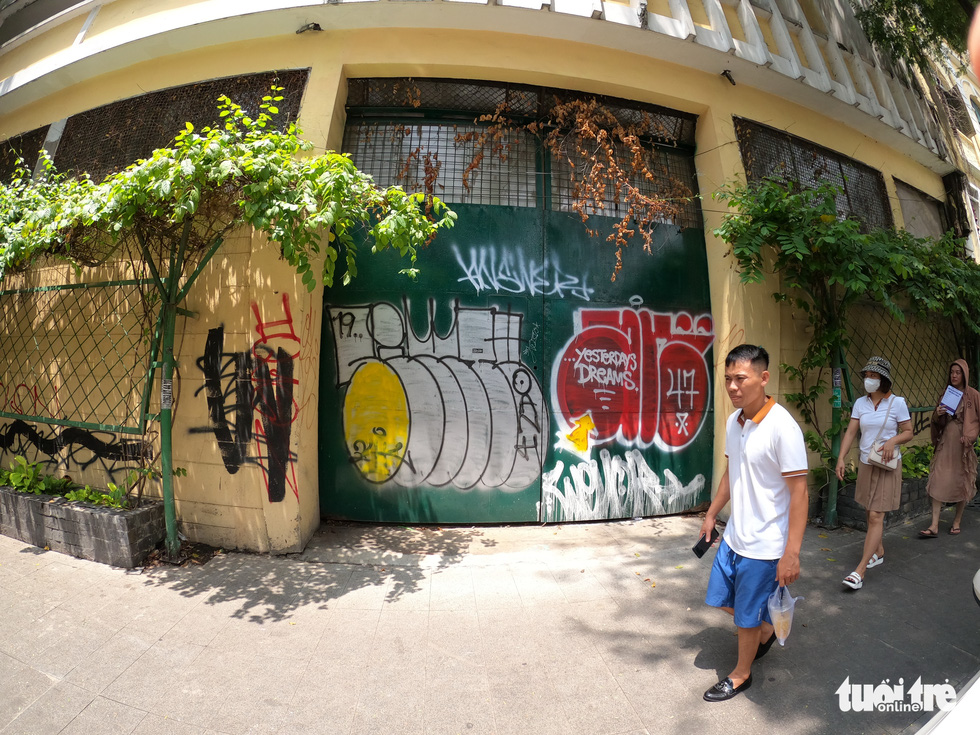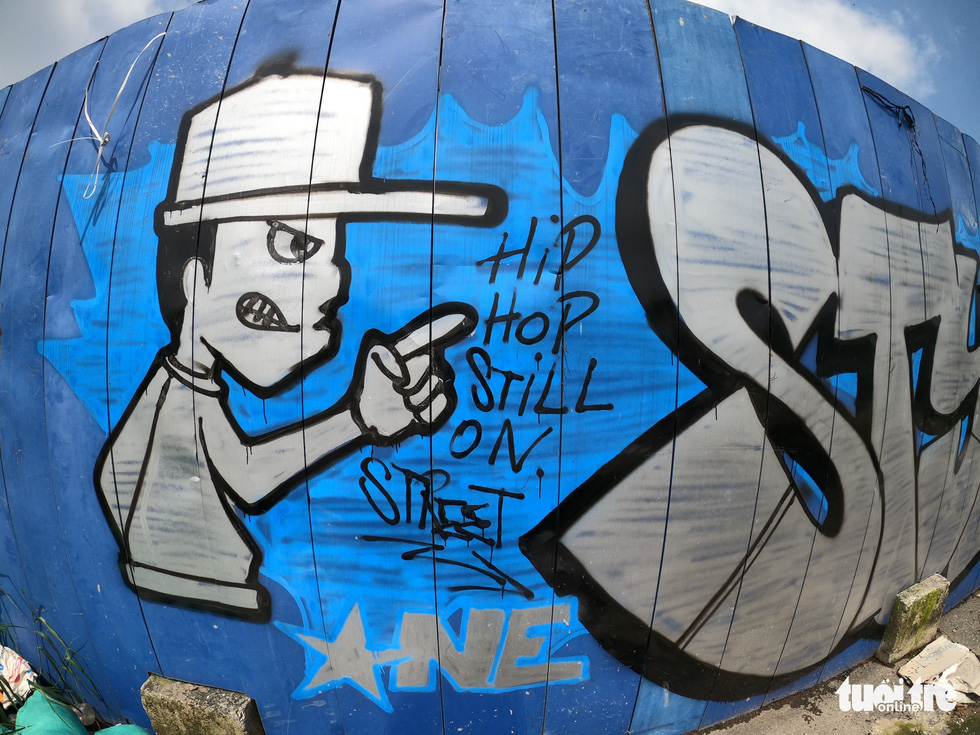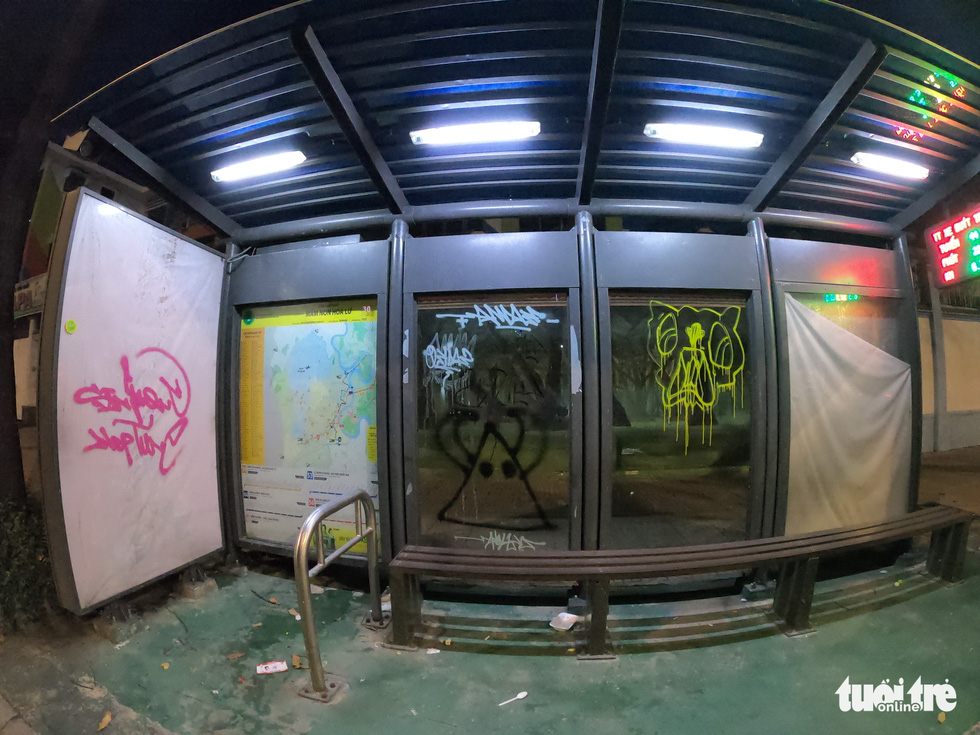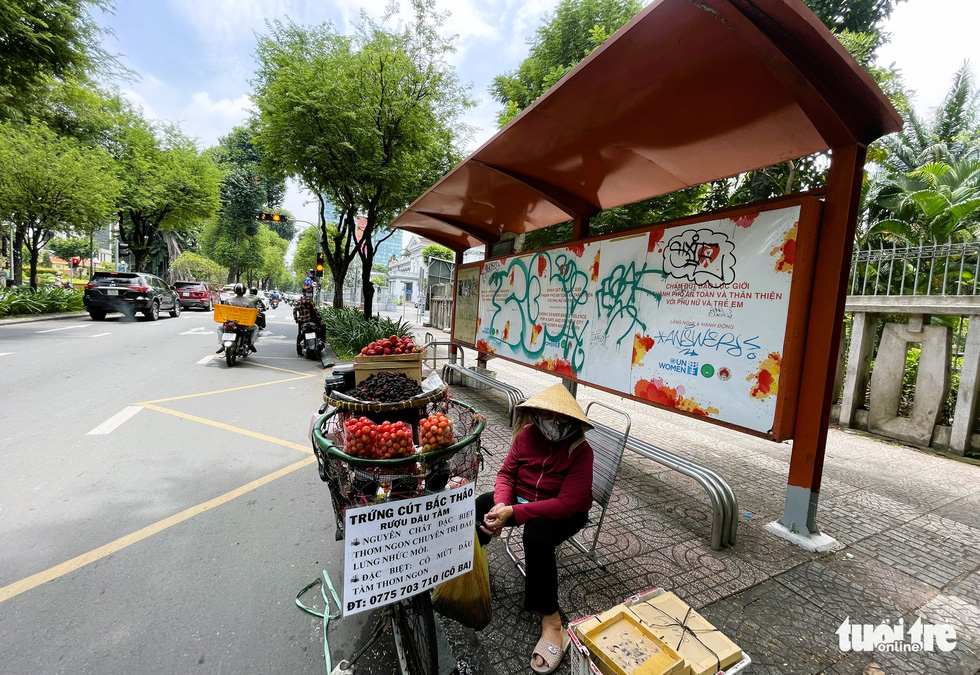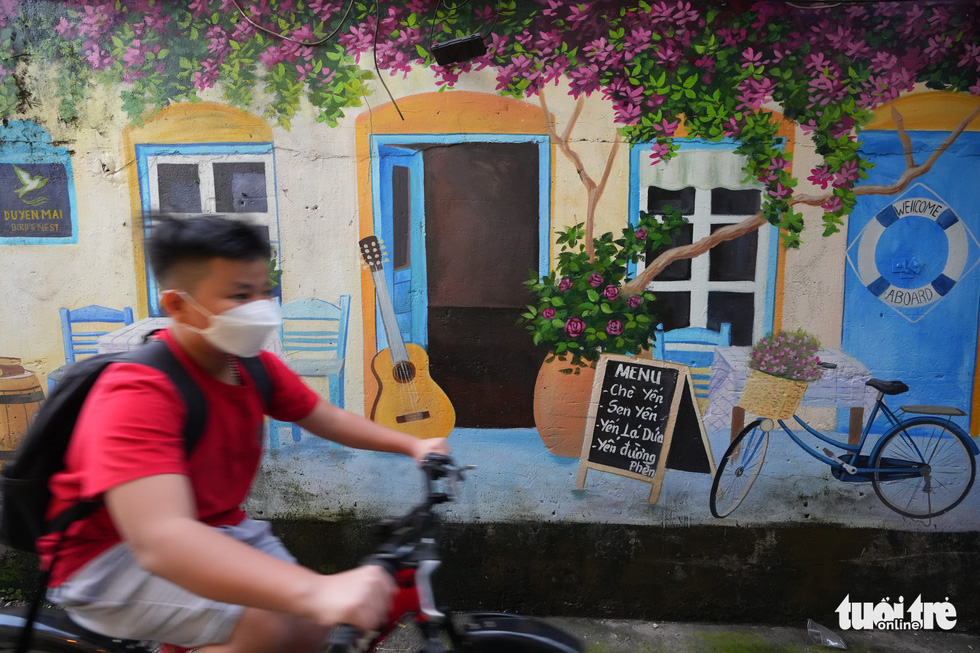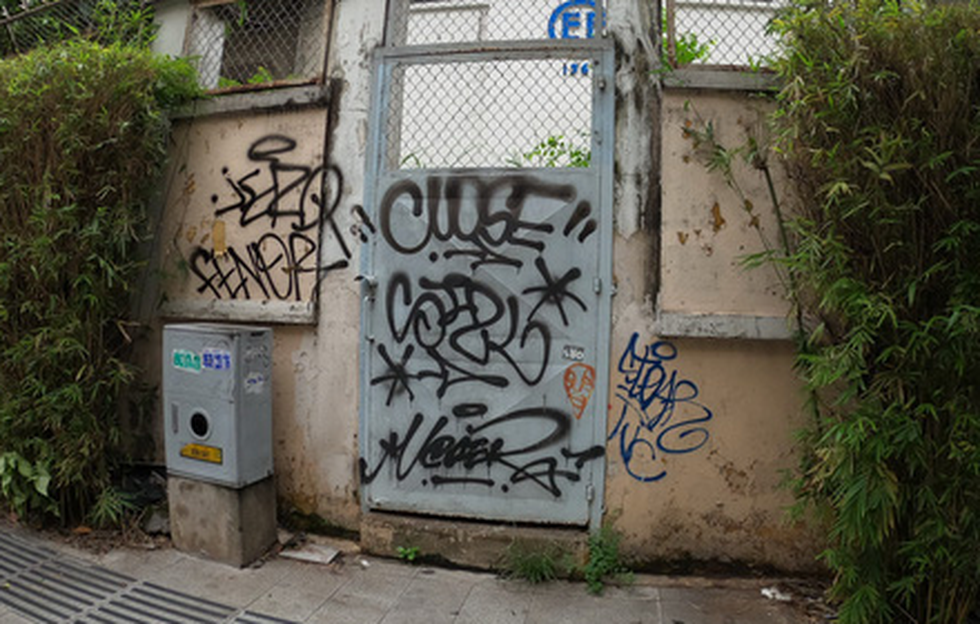Efforts will come to nothing if youngsters continue to wander streets in Ho Chi Minh City every night to paint and draw graffiti on the surface of any structure or facility, from dustbins to walls and bus stops. So, what are effective solutions to the situation?
Experts in the field suggested a few to root out the illegal act.
Playing field in the true sense of the word needed
According to Nguyen Quang Huy, an expert in urban art from the University of Social Sciences and Humanities under the Vietnam National University-Ho Chi Minh City, graffiti on public structures in Ho Chi Minh City are not appropriate in the urban space.
They damage urban landscapes rather than creating artistic value.
Despite many sanctions for violators, people’s awareness is more important, Huy noted.
If paintings on walls are prepared and carried out under a plan, the esthetics will be ensured, thus winning the sympathy of the community.
|
|
| A distasteful painting on Luong Dinh Cua Street in Thu Duc City under Ho Chi Minh City. Photo: Hoang Loc / Tuoi Tre |
“A playground for those who love painting should be formed with the involvement of experienced artists so that they can discuss where they can paint. If so, the youth will treat urban structures in a proper manner,” Huy said.
However, the development of a playing field for graffiti drawers should be included in long-term cultural infrastructure development plans.
Fine line between art and vandalism
Meanwhile, Associate Professor Dr. Nguyen Duc Loc, director of the Social Life Research Institute in Ho Chi Minh City, said those who do not completely understand the graffiti art may vandalize not only the urban beauty but also the economy.
Their misunderstanding creates a fine line between true art and vandalism.
State agencies’ punishment and youngsters’ graffiti are still in struggle and feasible solutions have yet to be worked out.
The struggle even has a stimulating effect on the youth.
Instead of seeking ways to punish graffiti artists, society should think of ways to promote positive graffiti.
The origin of graffiti should be taught so that the young can understand this form of street art more thoroughly. Graffiti should be considered an art form rather than the cause of a struggle between two sides, Loc said.
Society should have a more objective view of the youth’s hobbies and should not be too strict. Young people should be instructed to participate in graffiti the right way.
|
|
| A bus stop on Nguyen Huu Canh Street in District 1, Ho Chi Minh City is tainted with paint. Photo: Hoang Loc / Tuoi Tre |
For example, spaces for the young to show their ability should be created, Loc noted.
In addition, graffiti drawers often operate at night and at a fast pace to avoid being detected.
Therefore, education solutions and punishments should be balanced to promote positive values of street art.
However, those who vandalize must be subject to corresponding sanctions.
‘Rome wasn't built in a day’
Nguyen Tran Phuoc from the Vietnam Psychotherapy Association said the act of painting on public buildings cannot be considered a passion as those with passions do everything in line with rules for a reason and bring benefits to the society.
Acts which are aimed at satisfying personal demands and showing off oneself are not accepted.
Regarding the cause of their acts, Phuoc said they may face upheavals in their lives, specifically those related to their mental health.
For instance, they might expect to become artists but face obstacles while pursuing their dream or they want to demonstrate their skill in a public way.
They commit wrongdoings to gain others’ recognition for their ability.
Punishment is just a temporary solution. Society should join hands to care for them and connect them with psychologists.
“At first, we should learn about their gathering sites and the cause for their acts. Moreover, painting competitions should be held for them,” he said.
Only solutions targeting their awareness with the association of the entire community are optimal solutions.
Say no to wrongdoings
Drawing graffiti in public places is not just a bad hobby. It must be considered a crime which must be eradicated.
|
|
| A bus stop on Ly Tu Trong Street in District 1, Ho Chi Minh City is full of irrelevant writings. Bus stops are favorite destinations for drawers of graffiti. Photo: Le Phan / Tuoi Tre |
Those painting street art to smear the city are not accepted.
It is more worrying when drawers upload photos of their products on social networks, which is a serious risk due to the rapid spread. Regardless of ill-gotten fame, many are willing to spend sleepless nights drawing graffiti.
They do not act alone but in groups. With no more than three minutes for each painting, multiple paintings can be completed a night.
In reality, patrol teams do catch many vandals, but the number of those facing sanctions is modest and the sanctions are not stringent enough.
Education and awareness campaigns make no sense to those intentionally committing violations.
Drastic measures to promptly detect and strictly handle violators will help root out the illegal act.
With the density of surveillance cameras and the witness of local residents, it is simple to determine the damage.
Therefore, criminal charges should be imposed on violators, and their identity should be publicized.
Netizens should also join forces to boycott individuals who commit illegal acts on social networks. Wrongdoers will find it hard to exist without support.
Restoration of tainted structures costly
Many structures in the city are marked with graffiti and money is needed to return them to their original state, said Nguyen Viet Quang, head of the infrastructure management division No. 2 under the Road Traffic Infrastructure Management Center of Ho Chi Minh City.
|
|
| Beautiful drawings on walls should be promoted to deal with pointless graffiti. Photo: Huu Hanh / Tuoi Tre |
He added, “It takes artists only five to 10 minutes to smear public facilities but state agencies must spend many days dealing with the consequences. As a case in point, 14 types of solvent were used to remove vandalizing paint on the Thu Thiem 2 Bridge but the bridge cannot be restored to its original state.”
Until early last month, paint at some 20 spots on the Thu Thiem 2 Bridge had been removed but many spots on the bridge have since been smeared again.
“This is an act of vandalism, challenging management agencies, so strict sanctions are needed,” the official said.
In reality, many bridges in the city are filled with graffiti. Those with hundreds of paintings must be repainted.
“We have weighed using stain-resistant paint. However, the solution is costly with every square meter of structures requiring VND300,000 (US$12.8)," Quang said.
“We have asked for the support from the People’s Committees and police of Thu Duc City and District 1 to ensure the safety and beauty of the Thu Thiem 2 Bridge."
Pursuant to prevailing regulations, painting on public construction works is banned.
|
|
| The gate of an agency on Hai Ba Trung Street in District 1, Ho Chi Minh City is covered with graffiti. Photo: H.L. / Tuoi Tre |
Like us on Facebook or follow us on Twitter to get the latest news about Vietnam!



